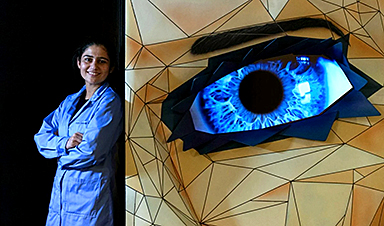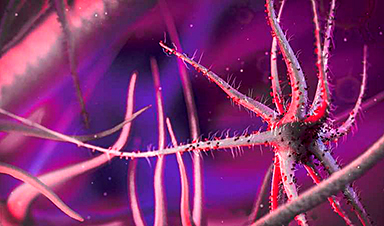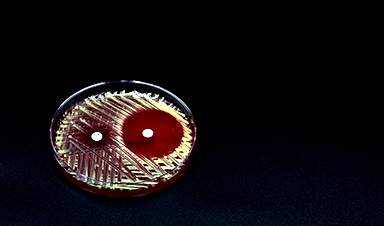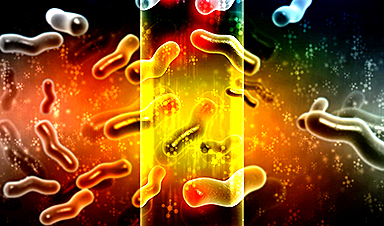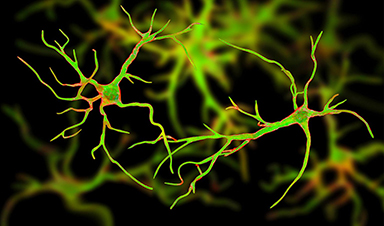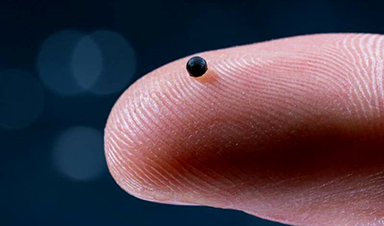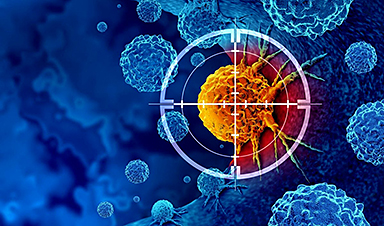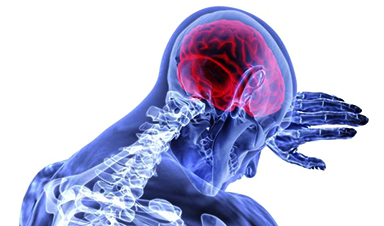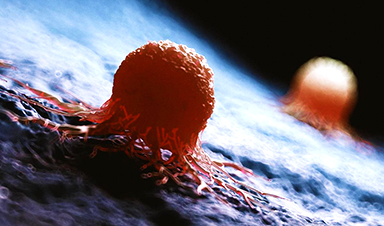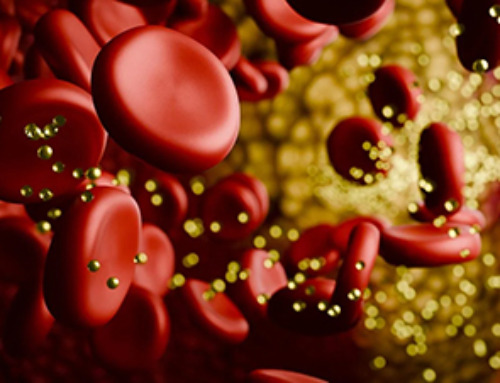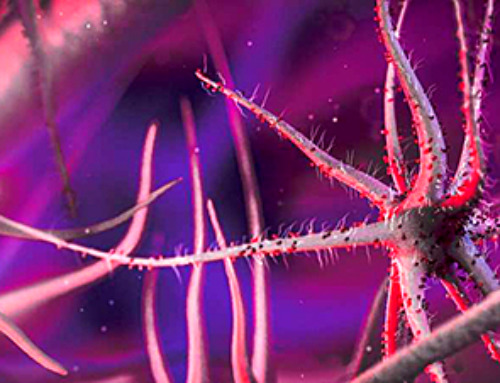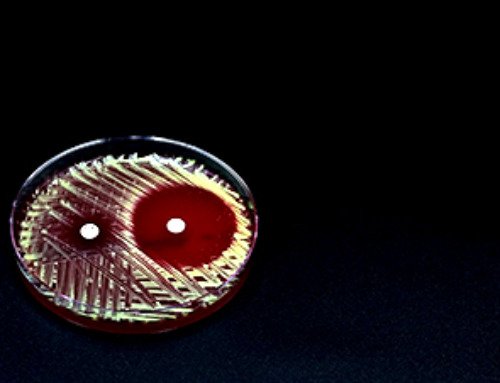Researchers have uncovered the 3D structure of RBP3, a key protein in vision, revealing how it transports retinoids and fatty acids and how its dysfunction may lead to retinal diseases.
Proteins play a critical role in the human body, acting as essential structural and functional components of cells, tissues, and organs. They are involved in a wide range of biological processes, from fundamental cellular functions such as DNA replication to more complex physiological activities, including those that enable vision.
Within the visual system, proteins are indispensable for detecting light, synthesizing photopigments in photoreceptor cells, and transmitting signals within these cells. Any disruption, whether through genetic mutation or protein malfunction, can impair normal vision and lead to a range of visual disorders.
Recently, scientists at the Institute of Physical Chemistry, Polish Academy of Sciences in collaboration with the International Centre for Translational Eye Research (ICTER) provided new structural insights into the RBP3 protein. Their findings have advanced our understanding of the visual cycle and its link to retinal diseases.
A Natural Optical Detector
The human eye, our natural optical sensor, is a remarkably complex organ that enables us to perceive the world. Its function depends on the coordinated activity of numerous molecules. Vision begins in the retina, a thin layer of tissue lining the back of the eye, where light-sensitive cells known as photoreceptors (rods and cones) are located.
These photoreceptors detect light and convert it into electrical signals which are then transmitted to the brain via the optic nerve, allowing us to form visual images. A key molecule in this process is 11-cis-retinal (11cRAL), a light-sensitive compound that binds to opsin proteins such as rhodopsin. This interaction triggers the conversion of light into an electrical signal, initiating the visual process.
When photons are absorbed, a cascade of chemical reactions, including the isomerization of 11-cis-retinal (11cRAL) to all-trans-retinal, initiates vision. To enable continued vision, the 11cRAL must be continuously regenerated through a process called the visual cycle. Here the story begins…
Enter RBP3: The Retinoid Transporter
This is where another molecule enters the picture. That is Retinol-binding protein 3 (RBP3), a special protein located in the intercellular matrix that maintains the proper functioning of the visual cycle. RBP3 works as a transporter of retinoids between photoreceptors and retinal pigment epithelium cells and is also known to bind some important fatty acids. It shuttles crucial molecules back and forth from the photoreceptors making the visual pigments ready for the multiple reactions under the photons triggering.
The severity of diabetic retinopathy, an eye disease associated with diabetes, is associated with decreased levels of RBP3, and leads to progressive vision loss.
As RBP3 interacts with receptors like the glucose transporter 1 (GLUT1) and vascular endothelial growth factor (VEGF), been involved in blood vessel growth and cellular signaling in the eye. Disrupted RBP3 causes accumulation of retinal "waste products", such as lipofuscin, which may cause oxidative damage to the RPE and photoreceptor cells. Besides diabetic retinopathy, RBP3 level disruption can also lead to retinitis pigmentosa, pan-retinal degeneration, and myopia.
Uncovering RBP3's Structure
Although the RBP3 connection with these diseases is well known, the mechanisms of the binding to retinoids to transport them are still not satisfactorily described. This mystery intrigued the international team of researchers led by Dr. Humberto Fernandes from the Institute of Physical Chemistry, Polish Academy of Sciences – International Centre for Translational Eye Research (ICTER) to solve that mystery. They focused on the insight into the detailed structure of the RBP3 when it binds different retinoids and fatty acids.
The main aim of their investigations was to overcome the lack of an experimental structural model for the native form of RBP3. To achieve this, the authors purified the porcine RBP3 (pRBP3) and analyzed its structure using cryo-electron microscopy (cryoEM), where data was collected under cryogenic conditions, and after that data was refined by multiple steps and software to get the final 3D structure/model of the protein.
Additionally, small-angle X-ray scattering (SAXS) was used to provide data on the conformation changes depending on the cargo molecules. Interestingly, the structure of the RBP3 can be elongated, or bent, suggesting the dynamic changes in the structure while docking its cargo.
"Based on previous knowledge of RBP3 properties and straightforward methods for isolation of the porcine variant of RBP3, we purified porcine RBP3, and obtained a protein with Förster resonance energy transfer behaviour analogous to other RBP3s. Through analysis of cryoEM data, we determined a structure at 3.67 Å resolution of the porcine RBP3 protein and observed conformational changes upon ligand binding," says Dr. Humberto Fernandes
Insights into RBP3 Function
Experimental results enabled the determination of the 3D structure and revealed conformational changes upon binding to its ligand as a step forward in the insight into the RBP3 functional mechanisms during the visual cycle.
RBP3 as a large molecule consisting of four retinoid-binding modules, has long lost its original catalytic functionality, and it evolved to be a cargo transporter interacting with a variety of molecules and delivering retinoids and fatty acids in the eye.
Research findings show the protein changes employing its shape during the binding of different molecules, which relates to the effectiveness of the interaction with the other molecules in the cargo and signaling. As a result, the conformational changes may play a significant role in the regulation of the light conversion into the visual signals.
Dr. Fernandes remarks, "In all measured parameters, the porcine variant mimics the more completely characterized bovine variant. The capacity of RBP3 to load different retinoids and fatty acids, the ability of the latter to displace the former, and the conformational changes dependent on ligand identity might be the basis for the loading and unloading of retinoids (and potentially DHA) to the intended cell types bordering the IPM intercellular matrix. Thus, RBP3 complexes merit further investigation."
Understanding the proteins, including genetic mutations that affect the protein's behaviour, like RBP3, is crucial to describe the mechanisms of the processes that appear in retinal diseases. Revealing the detailed structure of this bioactive molecule is a milestone in the studies on the interactions with different proteins.
The presented findings bring the bright light into potentially more effective and faster diagnostics, where the RBP3 molecule would work as an early-stage retinal disease development biomarker. What is more, it can help in the regulation of the RBP3 activity to develop treatments for the disruption of the visual process.
Reference: "CryoEM structure and small-angle X-ray scattering analyses of porcine retinol-binding protein 3" by Vineeta Kaushik, Luca Gessa, Nelam Kumar, Matyáš Pinkas, Mariusz Czarnocki-Cieciura, Krzysztof Palczewski, Jiří Nováček and Humberto Fernandes, 1 January 2025, Open Biology.
DOI: 10.1098/rsob.240180
News
Current Heart Health Guidelines Are Failing To Catch a Deadly Genetic Killer
New research reveals that standard screening misses most people with a common inherited cholesterol disorder. A Mayo Clinic study reports that current genetic screening guidelines overlook most people who have familial hypercholesterolemia, an inherited disorder that [...]
Scientists Identify the Evolutionary “Purpose” of Consciousness
Summary: Researchers at Ruhr University Bochum explore why consciousness evolved and why different species developed it in distinct ways. By comparing humans with birds, they show that complex awareness may arise through different neural architectures yet [...]
Novel mRNA therapy curbs antibiotic-resistant infections in preclinical lung models
Researchers at the Icahn School of Medicine at Mount Sinai and collaborators have reported early success with a novel mRNA-based therapy designed to combat antibiotic-resistant bacteria. The findings, published in Nature Biotechnology, show that in [...]
New skin-permeable polymer delivers insulin without needles
A breakthrough zwitterionic polymer slips through the skin’s toughest barriers, carrying insulin deep into tissue and normalizing blood sugar, offering patients a painless alternative to daily injections. A recent study published in the journal Nature examines [...]
Multifunctional Nanogels: A Breakthrough in Antibacterial Strategies
Antibiotic resistance is a growing concern - from human health to crop survival. A new study successfully uses nanogels to target and almost entirely inhibit the bacteria P. Aeruginosa. Recently published in Angewandte Chemie, the study [...]
Nanoflowers rejuvenate old and damaged human cells by replacing their mitochondria
Biomedical researchers at Texas A&M University may have discovered a way to stop or even reverse the decline of cellular energy production—a finding that could have revolutionary effects across medicine. Dr. Akhilesh K. Gaharwar [...]
The Stunning New Push to Protect the Invisible 99% of Life
Scientists worldwide have joined forces to build the first-ever roadmap for conserving Earth’s vast invisible majority—microbes. Their new IUCN Specialist Group reframes conservation by elevating microbial life to the same urgency as plants and [...]
Scientists Find a Way to Help the Brain Clear Alzheimer’s Plaques Naturally
Scientists have discovered that the brain may have a built-in way to fight Alzheimer’s. By activating a protein called Sox9, researchers were able to switch on star-shaped brain cells known as astrocytes and turn them into [...]
Vision can be rebooted in adults with amblyopia, study suggests
Temporarily anesthetizing the retina briefly reverts the activity of the visual system to that observed in early development and enables growth of responses to the amblyopic eye, new research shows. In the common vision [...]
Ultrasound-activated Nanoparticles Kill Liver Cancer and Activate Immune System
A new ultrasound-guided nanotherapy wipes out liver tumors while training the immune system to keep them from coming back. The study, published in Nano Today, introduces a biodegradable nanoparticle system that combines sonodynamic therapy and cell [...]
Magnetic nanoparticles that successfully navigate complex blood vessels may be ready for clinical trials
Every year, 12 million people worldwide suffer a stroke; many die or are permanently impaired. Currently, drugs are administered to dissolve the thrombus that blocks the blood vessel. These drugs spread throughout the entire [...]
Reviving Exhausted T Cells Sparks Powerful Cancer Tumor Elimination
Scientists have discovered how tumors secretly drain the energy from T cells—the immune system’s main cancer fighters—and how blocking that process can bring them back to life. The team found that cancer cells use [...]
Very low LDL-cholesterol correlates to fewer heart problems after stroke
Brigham and Women's Hospital's TIMI Study Group reports that in patients with prior ischemic stroke, very low achieved LDL-cholesterol correlated with fewer major adverse cardiovascular events and fewer recurrent strokes, without an apparent increase [...]
“Great Unified Microscope” Reveals Hidden Micro and Nano Worlds Inside Living Cells
University of Tokyo researchers have created a powerful new microscope that captures both forward- and back-scattered light at once, letting scientists see everything from large cell structures to tiny nanoscale particles in a single shot. Researchers [...]
Breakthrough Alzheimer’s Drug Has a Hidden Problem
Researchers in Japan found that although the Alzheimer’s drug lecanemab successfully removes amyloid plaques from the brain, it does not restore the brain’s waste-clearing system within the first few months of treatment. The study suggests that [...]
Concerning New Research Reveals Colon Cancer Is Skyrocketing in Adults Under 50
Colorectal cancer is striking younger adults at alarming rates, driven by lifestyle and genetic factors. Colorectal cancer (CRC) develops when abnormal cells grow uncontrollably in the colon or rectum, forming tumors that can eventually [...]
